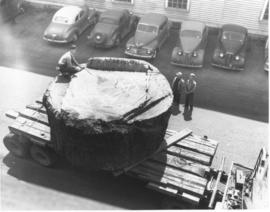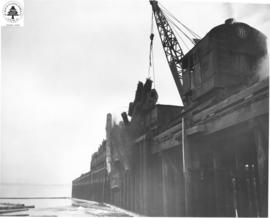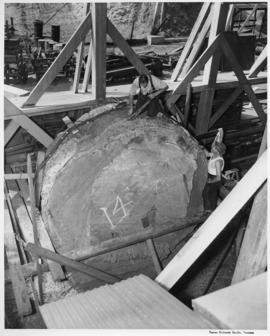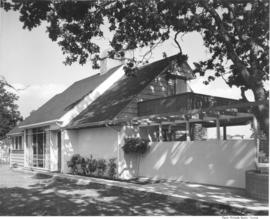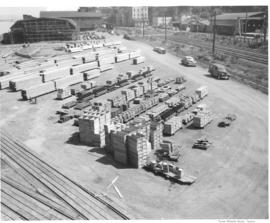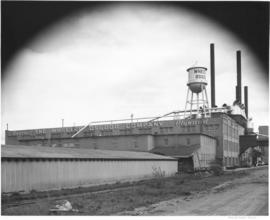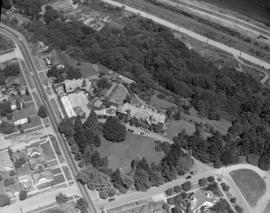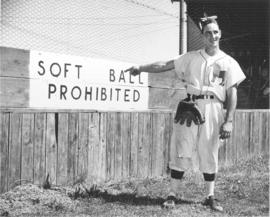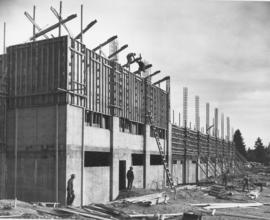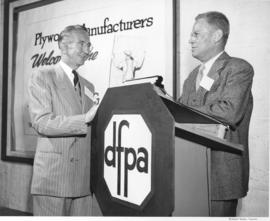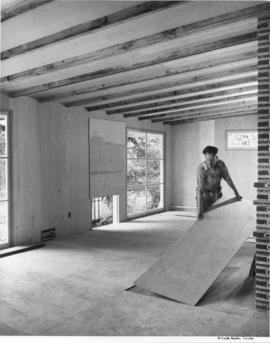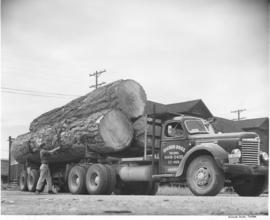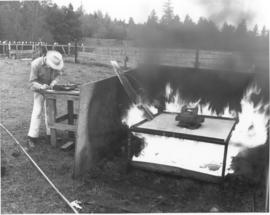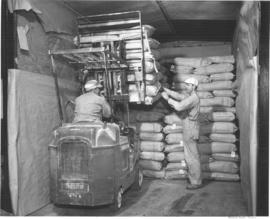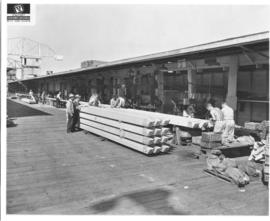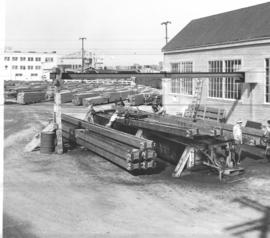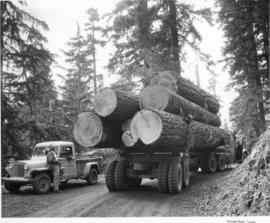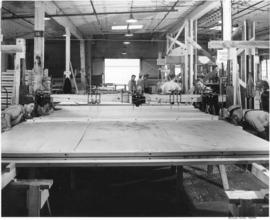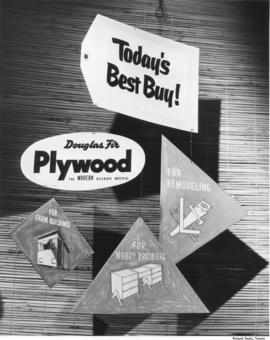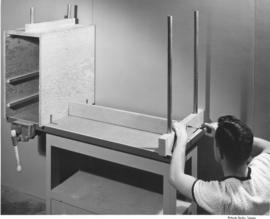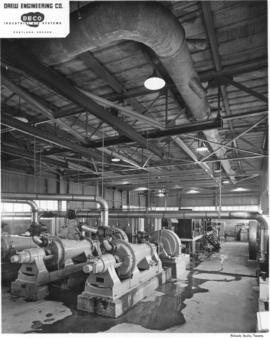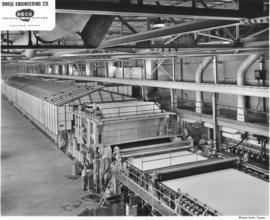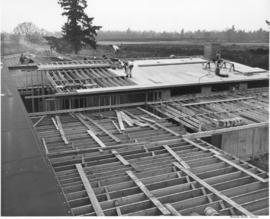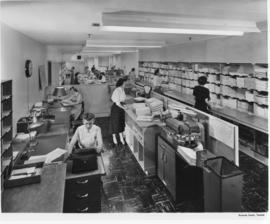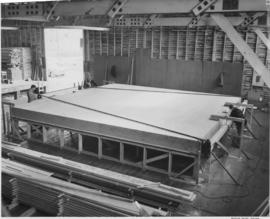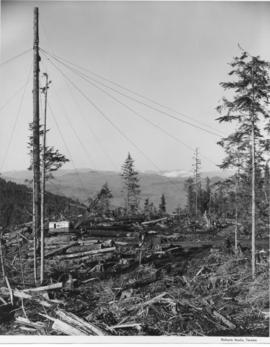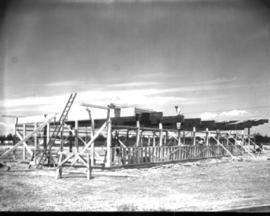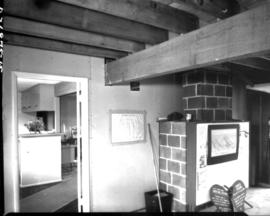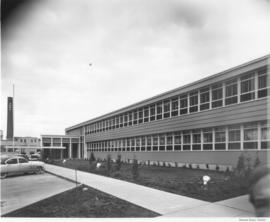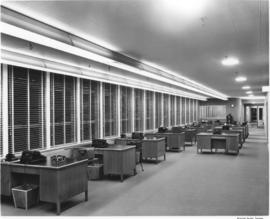- Item
- 1946
Part of Richards Studio Photographs
ca. 1946. A section of Douglas Fir tree trunk almost 14 feet in diameter arrives at the Northwest Door Co. plywood plant. Anthony A. "Spike" Maras perches on top of the trunk, which is marked with a white 14 and sits on a logging truck. The "14" is the measurement of the diameter of the tree. On the ground, Fred R. Davis, left, and Percy J. Maras crane their necks to see the top of the trunk. The men are the owners of the Davis & Maras Co., which was hired by Northwest Door to fell the tree. The giant trunk will not be made into plywood, but will be put on display. (identification supplied by Anthony "Spike" Maras)
Logs; Lumber industry--Tacoma--1940-1950; Northwest Door Co., Inc. (Tacoma); Tree stumps--Tacoma--1940-1950; Logging trucks--1940-1950; Maras, Anthony A.; Davis, Fred R.; Maras, Percy J.;
